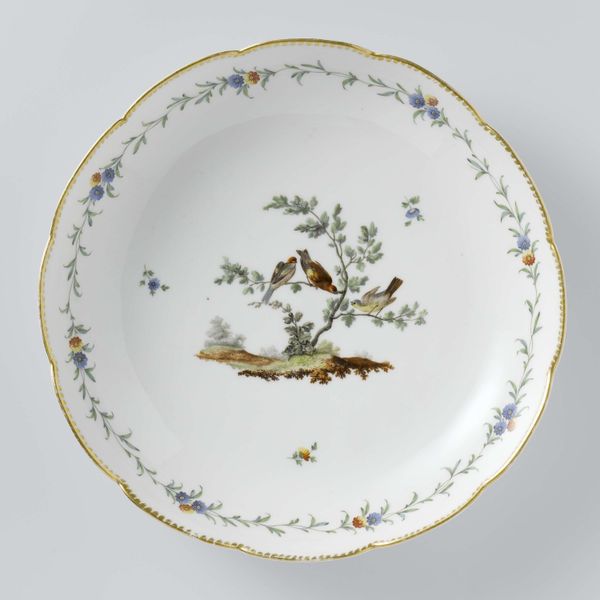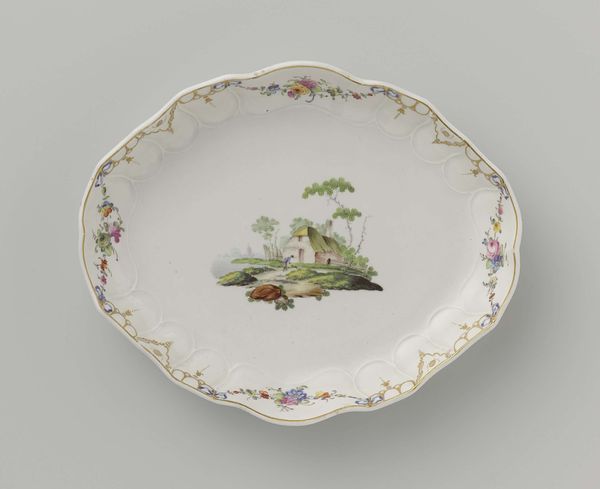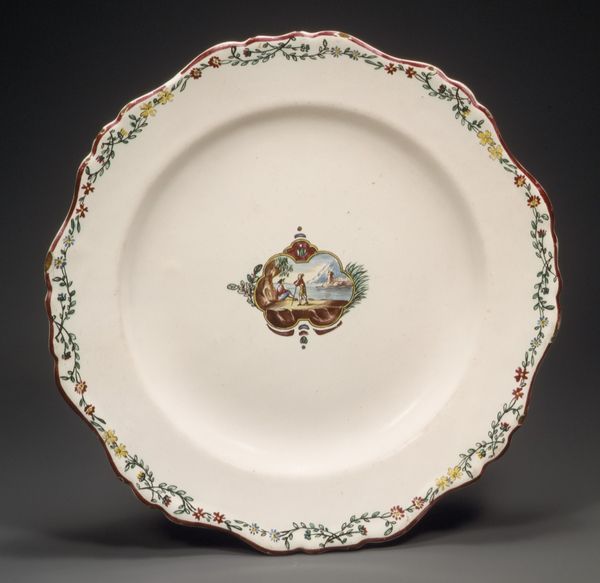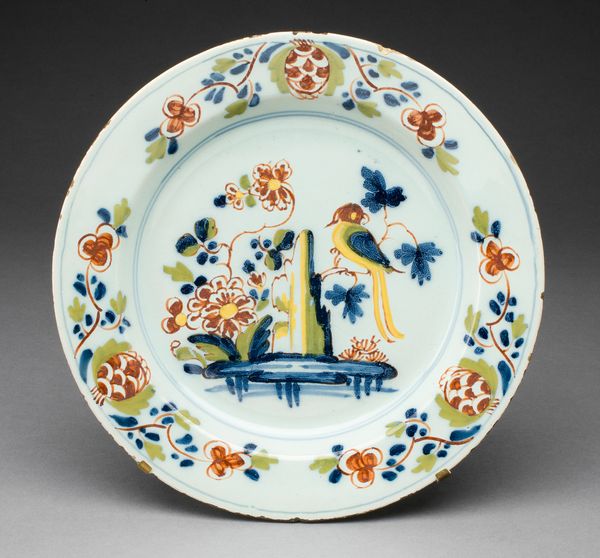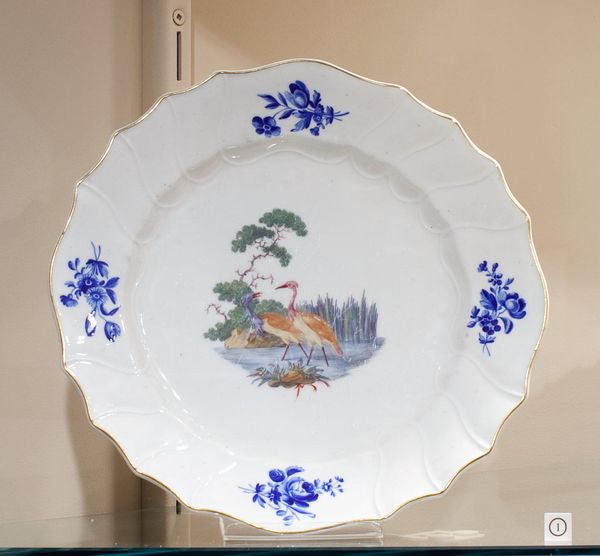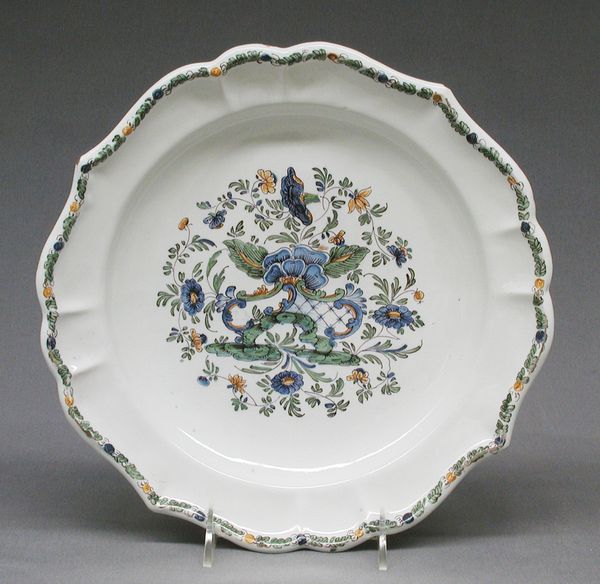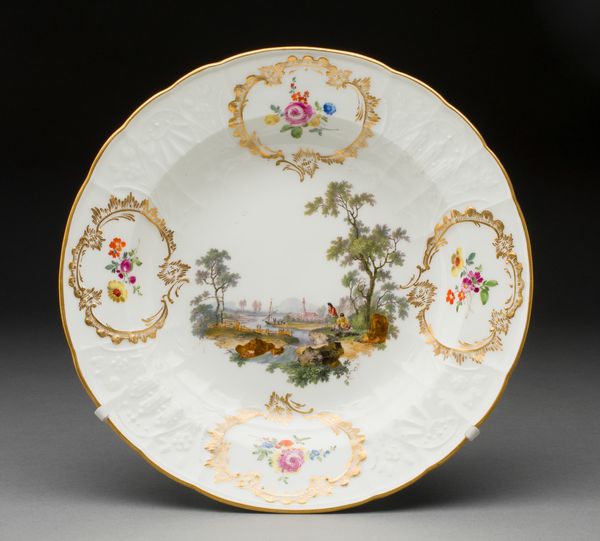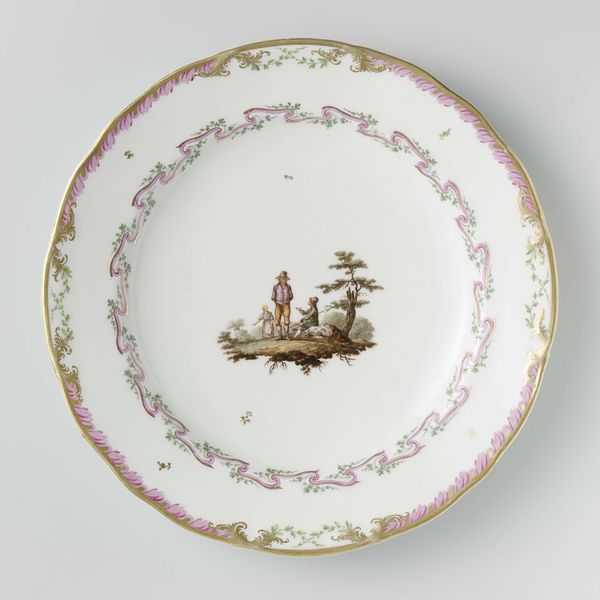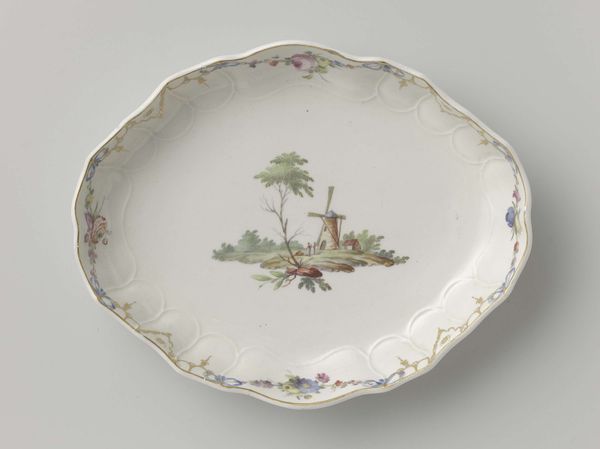
painting, ceramic, porcelain, earthenware
#
painting
#
landscape
#
ceramic
#
porcelain
#
figuration
#
earthenware
#
orientalism
#
earthenware
#
genre-painting
#
decorative-art
Dimensions: Diameter: 9 3/4 in. (24.8 cm)
Copyright: Public Domain
Editor: So, here we have a porcelain plate, believed to be from the Ferrat Manufactory, sometime between 1765 and 1785. The scene painted on it is quite intriguing – almost like a snapshot of daily life. What are your initial thoughts when you see this plate? Curator: This plate presents a fascinating glimpse into the 18th-century European fascination with the “Orient.” We often see these kinds of objects – genre scenes rendered through a Western lens. Think about it – what does this scene tell us, not just about the portrayed figures, but about the tastes and perspectives of the European elite who would have owned this plate? Editor: That's a really good point. It’s easy to look at the painting and appreciate the aesthetic, but less easy to remember that its artistic and historical values are determined by cultural lenses. So, this isn't necessarily an accurate portrayal, but instead a reflection of what Europeans wanted to believe about Eastern cultures? Curator: Precisely. And where was this plate likely displayed, how was it used? Fine porcelain like this signaled status and access. The landscape isn't so much about capturing the details of the landscape itself but establishing exotic settings for genre-painting scenes, or just the decorative element it adds to the rim, enclosed by earthenware. It's the political power and economical stability reflected and put on display. Editor: That really shifts my perspective. It makes me think about the power dynamics at play during that period and how they influenced artistic production. It makes me want to explore more pieces and analyze who the product caters to. Curator: Indeed, objects like these are more than just pretty things; they're embodiments of social and historical forces. Editor: Thanks, that really brought so much historical background into focus.
Comments
No comments
Be the first to comment and join the conversation on the ultimate creative platform.
